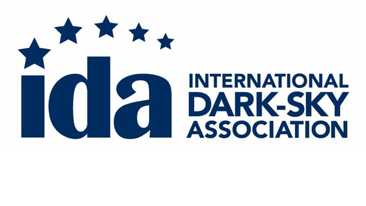Insights > American Cities Can Learn and Evolve

American Cities Can Learn and Evolve
Evolving Toward Inclusive Cities: A Series from Caddis Collaborative
Post #5: American Cities Can Learn and Evolve
Affordable housing. Inclusionary zoning. Housing justice activism. Inclusive communities. Fifteen-minute neighborhoods. Reparations.
Despite the efforts we have discussed in this blog series, there is a long way to go to make real change happen, to create the inclusive and complete cities we aspire to.
What’s needed now is concerted, intentional, conscious change. It can sometimes feel that our exclusionary cities represent the way things have always been done. If we don’t approach the issue with conscious intention, it can feel like structures such as single-family zoning are “natural,” just part of the environment in which we live, part of the air we breathe.
Here at Caddis Collaborative, we believe that everything is on the drawing table. These structures aren’t “natural” – they’re human-made. People created these structures, policies, legislation – and people can undo them.
Our policies and practices can change, but it’s on all of us to make the change. We can work with planning boards, city councils, and county commissions to make our voices heard and to work for specific changes in policies and practices.
We hope you will join us in paying attention to these potential changes, especially in your local community. Better yet, we hope you will join the activists and community-based organizations in working actively for change.
Together, we can create a new world of inclusive cities.
Further Reading
Want to dig deeper into the history of exclusionary housing and strategies for moving forward to inclusive cities? Here are a few resources to help you get started.
History: Exclusionary Housing Practices
- “What Are Covenants?” (University of Minnesota): This resource looks at the history of restrictive neighborhood covenants in Minneapolis.
- “The Racist Housing Policy That Made Your Neighborhood” (The Atlantic): This article looks closely at exclusionary housing policies and how they helped shape 20th-century California.
- “Redlining Was Banned 50 Years Ago. It’s Still Hurting Minorities Today” (Washington Post): This in-depth article provides a solid introduction to the practice of redlining.
- Rocky Mountain Land Use Institute: This organization, based at the University of Denver’s law school, is focused on “undesigning the red line.” It offers webinars that shed light on this issue, including “Race, Equity and Land Use”; “Zoning and Racial Bias”; “Housing, Part One”; and “Housing Access and Racial Equity, Part Two.” If you don’t want to watch the webinars, you can check out the summary report.
Single-Family Zoning
- “Cities Start to Question an American Ideal: A House with a Yard on Every Lot” (New York Times): This article provides a very thorough discussion of single-family zoning.
- “Is It Time to End Single-Family Zoning?” (Eric Jaffe, Medium): This extensive article has essential information for planning policy professionals.
A Vision for Change: Inclusionary Housing
- “Inclusionary Housing: The Basics” (National Housing Conference): Aimed at local governments that are considering adopting inclusionary housing ordinances, this webpage provides a great list of additional resources.
- Inclusionary Housing: Creating and Maintaining Equitable Communities (Rick Jacobus, Lincoln Institute of Land Policy): This extensive report focuses on low-income households and economic integration.
- “The Economics of Inclusionary Development” (Urban Land Institute): The preface to this report is especially helpful in understanding inclusionary zoning.
Other Reading
- “Power, Housing Justice and Health Equity Primer” (Lead Local Collaborative): This brief explains how building community power helps address housing inequities and improve health.
- The Yellow House (Sarah Broom): This memoir, which won the 2019 National Book Award, is a powerful exploration of housing displacement and the impact of zoning. The book tells the story of Broom’s African American family’s home, located in a problematically zoned part of New Orleans.
- Walk Score® and “This Map Tells You if You Live in a ‘15-Minute City”: Both of these tools can help you determine if you live in a “15-minute neighborhood.”
More from Our Series on Evolving Toward Inclusive Cities
Want to learn more about how the United States might evolve toward more inclusive cities? Join Caddis Collaborative as we explore these issues. Learning about these issues is one step toward a cure. Check out our other posts in this series:
- Post #1: The Air We Breathe Isn’t “Natural”
- Post #2: Inclusionary Zoning and Housing Justice
- Post #3: Creating Inclusive, Complete Communities
- Post #4: A Vision for Change: Tulsa on the Move
- Post #5: American Cities Can Learn and Evolve
For a list of additional resources, check out the links included at the end of Post #5: American Cities Can Learn and Evolve
Recent Posts
- What Brings Us Joy: Julian Loves Being Creative January 21, 2025
- What Brings Us Joy: Chad Practices Meditation January 14, 2025
- What We’re Reading: Morgan Recommends “The Midnight Library” January 7, 2025
- Welcome 6 of 6: Settling In: Living in Community the First Year December 16, 2024
- Welcome 5 of 6: Orientation: Living in Community the First Few Months December 16, 2024
Other Relevant Insights






















We’re proud to be in good company.
We love being part of the community that’s bringing good design to good people. That’s why we contribute to and participate in these organizations – so we can bring the best emerging ideas to you.
Get In Touch
Let us bring your vision to life.
A beautiful space that fits your best life. A sustainable build. A fun and easy design process. We’re with you every step of the way – from the beginning dream to the finished project!



